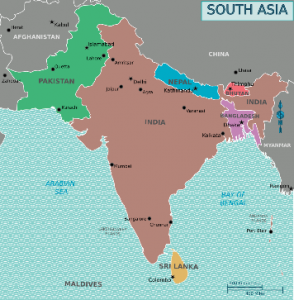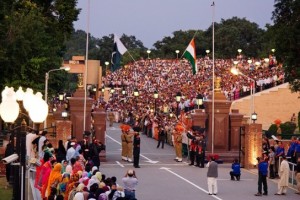India’s Nuclear Future: Continuity and Change
On June 16, the Stimson Center hosted two panels on India’s Nuclear Policy and Regional Stability. The first panel began with Indian Vice Admiral A.K. Singh, who underscored the importance of recognizing India and Pakistan as part of a nuclear triangle with China. Admiral Singh then echoed Prime Minister Modi’s policy of “no first use” – a policy in which nuclear weapons are not used unless first attacked by nuclear weapons from an adversary.
Lieutenant General Vinay Shankar anticipated less change and more continuity in regards to the new government in New Delhi. He quoted PM Modi, who has been advocating for global nuclear disarmament and a termination of all first-use capabilities by nuclear powers. LTG Shankar emphasized the fact that India’s intention for minimum deterrence will not waiver, and there will be no future arms race as seen with the Cold War between the United States and the former Soviet Union.
Mr. Michael Krepon, Director for South Asia at the Stimson Center, then summarized by citing Pakistan’s growing internal security concerns, in combination with problems resulting from non-transparent command and control and escalation requirements as India and Pakistan modernize their nuclear programs and begin adding short-range systems, cruise missiles, and sea-based capabilities. Although China and India have focused more attention on economic growth and development rather than on nuclear modernization, Mr. Krepon warned that another crisis similar to the Mumbai bombings of 2008 could call India’s bluff of significant restraint and could potentially lead to quick escalation.
Regional Stability and the Nuclear Dimension
 The second panel began with Ambassador Jayant Prasad providing a brief overview of regional stability. He began by citing issues in Afghanistan, Pakistan, Sri Lanka, and Bangladesh, as well as Tibet, which could present immediate ramifications since India hosts the Dalai Llama as a refugee. He then looked to the success story of Nepal and the Maoist insurgency that was brought to an end, followed by reintegration of the military, citing that this should serve as a model for peace-building in the region. Referencing back to India, Prasad concluded that in the event of spoilers causing crises on Indian soil, India has no other option than to harden-up and take some blows up to a certain threshold in order to maintain nuclear stability in the region.
The second panel began with Ambassador Jayant Prasad providing a brief overview of regional stability. He began by citing issues in Afghanistan, Pakistan, Sri Lanka, and Bangladesh, as well as Tibet, which could present immediate ramifications since India hosts the Dalai Llama as a refugee. He then looked to the success story of Nepal and the Maoist insurgency that was brought to an end, followed by reintegration of the military, citing that this should serve as a model for peace-building in the region. Referencing back to India, Prasad concluded that in the event of spoilers causing crises on Indian soil, India has no other option than to harden-up and take some blows up to a certain threshold in order to maintain nuclear stability in the region.
Mr. Vikram Singh, VP for International Policy at the Center for American Progress, followed on a more optimistic note, referring to new leadership in Afghanistan, Pakistan, and India, and the potential to improve relations between the countries. Singh declared that although cross-border terrorism remains a threat to India, the country has managed crises in the past with relative restraint. The bigger regional threat that India could face would be the collapse of Afghanistan or Pakistan. These countries need to do well to battle extremism and establish more stable foundations. For this reason, India invested close to $1.4 billion in aid for small scale development projects in Afghanistan. Although proximity between India and Pakistan remains an issue since things can escalate too quickly, confidence-building and back-channel diplomacy through conversations between the leaders, regional trade, and economic integration can help to alleviate some of the tensions within the region.
Lastly, Josh White, Deputy Director for South Asia at the Stimson Center, identified four ways in which Indo-Pakistani risk profiles could be changing.
1. How New Delhi would respond to a crisis with the newly elected government.
2. Technology, specifically ballistic missiles, could be seen as an attempt to create first-strike capabilities and could be destabilizing. Perceptions of technologies on both sides are important – India sees air power as escalatory whereas Pakistan sees ground mobilization as escalatory.
3. The difficulty in seeing the U.S. getting tough on Pakistan in the event of a crisis.
4. The changing geography of militancy with terrorism returning to Afghanistan in the form of Al-Qaeda remnants and Lashkar-e-Tayyiba (LET) terrorist groups.
White concluded by placing emphasis on the need for civilians and uniformed officers in all three countries to get together and talk in order to open more lines of communication and prevent a major crisis from occurring.
You can watch the entire event here:
Theresa Shaffer is a nuclear security researcher and intern at the American Security Project. She is a recent graduate of the University of North Texas with degrees in International Studies and French. You can follow her on twitter here: Theresa Shaffer
The post India’s Nuclear Policy and Regional Stability appeared first on American Security Project.



